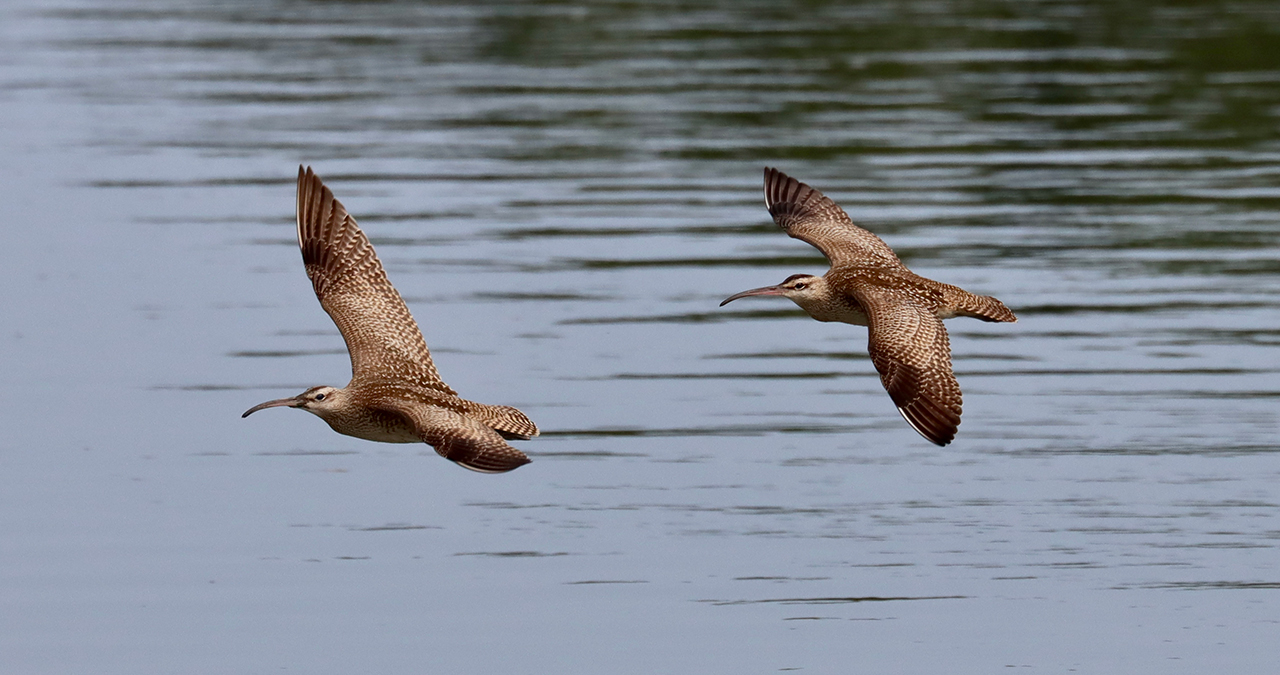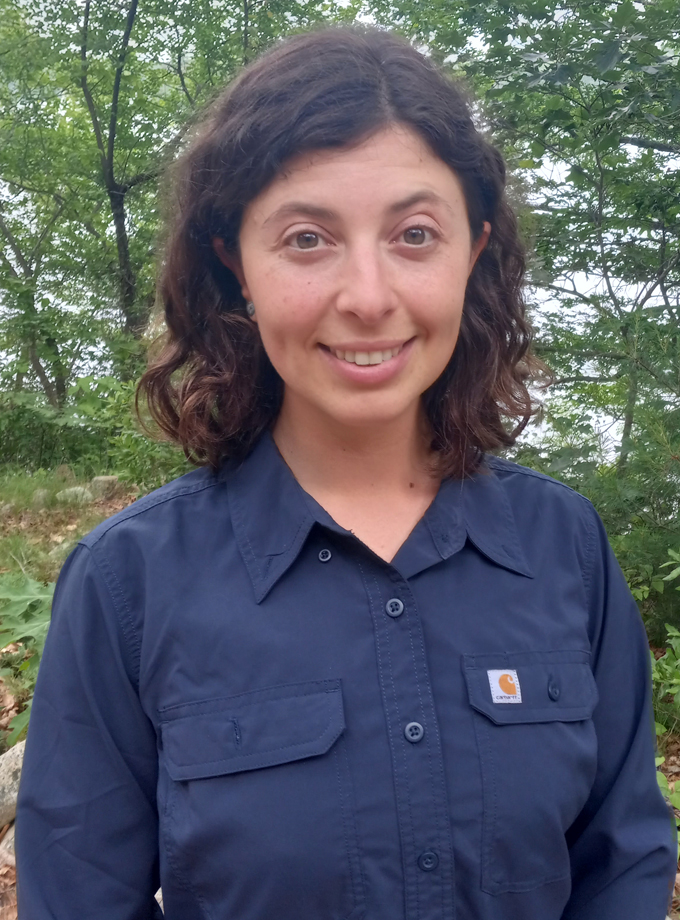
Liana DiNunzio
Shorebird Biologist
How do you catch a juvenile whimbrel on Cape Cod in order to quickly band it, put a solar-powered satellite tracker on it, and release it, all with minimal stress to the bird? In a recent Small Sit Webinar, Liana DiNunzio gave us some insight into how a specialized team at Manomet accomplishes this, and what we’ve learned about juvenile (and adult) Whimbrels over the past 10 years. In the Q&A, Liana talked about banding whimbrels on Cape Cod, and how we are scaling up our efforts to collect more data to inform learn more about this flagship species: what threatens them (hello, hurricanes!) and our work to reverse their decline.
Q: What inspired you to study Whimbrels on Cape Cod?
Liana DiNunzio: Whimbrel are fascinating migratory shorebirds, and understanding their migration patterns can help us protect them better. By tagging juvenile and adult Whimbrel, we’re learning about their life cycles, migratory routes, and important areas that they need to survive. We can assess threats at important Whimbrel sites to understand how they impact whimbrel populations. This research will guide a Whimbrel conservation plan that focuses on alleviating threats and improving habitat, with the ultimate goal of reversing whimbrel population declines.
Q: What do the traps you use look like, and how do they work?
Liana DiNunzio: The traps consist of nearly invisible loops of fishing line, not even as big as your hand, tied along a long baseline. We stake them down in feeding areas, increasing the chances that a bird will step into a loop, which then tightens around their leg. Setting up and waiting requires patience and strategy, but it’s thrilling when we finally catch a bird. We aim to minimize stress and release them as soon as possible.
Q: When you caught your first bird, what was that like? Was it nerve-wracking?
Liana DiNunzio: Definitely! I did my first Whimbrel trapping last year in Texas, and it was quite an experience. It takes a lot of patience, strategy, and luck to find the birds, set the traps, and wait for a bird to step into a loop. It’s exciting when it happens! We work swiftly and calmly to minimize stress and release them as soon as possible.

Q: How often do Whimbrels eat, and what do they consume during their journey?
Liana DiNunzio: Whimbrel eat different food depending on what is locally available at each site. For example, during stopovers in Atlantic Canada and Maine, Whimbrels eat blueberries; on Cape Cod, they mainly eat fiddler crabs and other marine invertebrates; and in Texas and Louisiana, they eat crawfish. They gorge themselves during stopovers to build up fat reserves to fuel their long migrations. Except during high tides, when feeding grounds are submerged and they rest on higher ground, they eat almost constantly.
Q: Can we assume they gorge on fiddler crabs before departure, and does that reflect in their weight?
Liana DiNunzio: Absolutely. A bird’s weight is a good indicator of its preparation for migration. They arrive with depleted fat reserves and then fatten up for the next leg of their journey.
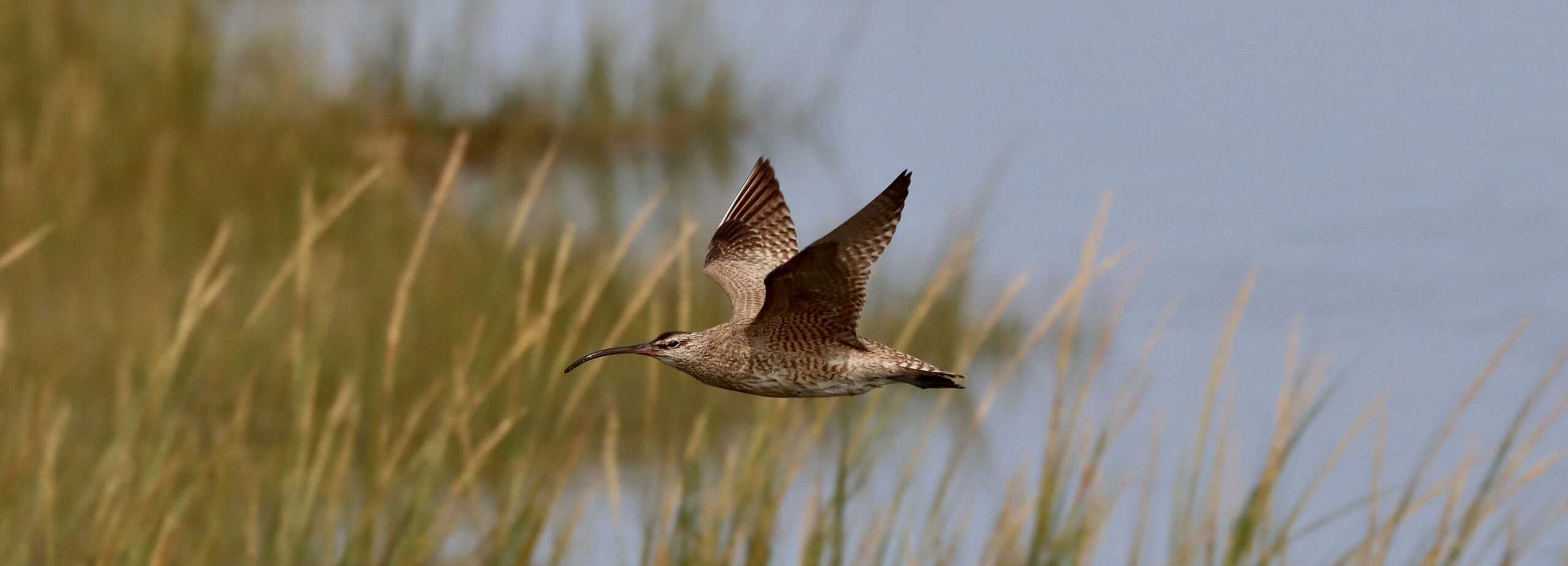
Q: During your Small Sit webinar, you mentioned that juvenile Whimbrels can’t glide and must constantly flap their wings while flying. Why is that?
Liana DiNunzio: Shorebirds, in general, flap continuously during migration because they can’t glide or rest on water like other birds do. This constant flapping uses a lot of energy, which is why stopovers to refuel are crucial, especially when preparing for non-stop flights that can last over 3 days.
Q: What threats can whimbrels face during their long migrations?
Liana DiNunzio: Whimbrels can face many threats during their migrations. One of the biggest challenges is extreme weather, including hurricanes, which can be especially dangerous during their southbound migration through the Atlantic. These storms can blow them off course, exhaust them, or even lead to fatalities. In addition to weather, they face habitat loss at critical stopover sites where they rest and refuel. Human disturbances, hunting in some regions, and pollution also pose risks. All of these threats can impact their survival and migration success.

Q: When a Whimbrel stops transmitting a tracking signal, does it usually mean that the bird is no longer alive, or is it just as likely that something happened to the transmitter?
Liana DiNunzio: Not necessarily. It could be due to several technical issues. The transmitter might malfunction, the solar-powered battery could fail if covered by feathers or shaded habitats like mangroves, or the harness might break, causing the transmitter to fall off. We analyze clues like battery levels when the signal stopped to help determine the cause.
Q: Is there a way to determine which breeding populations the marked birds are from?
Liana DiNunzio: Yes, possibly. We collected small blood samples from juveniles for a genetic mapping project to understand their population origins. This will help us see if they return to their hatching sites or if there’s gene flow between populations. Stay tuned for future findings!
Q: Is there a sense of what percentage of juvenile birds stay in one habitat for more than one winter?
Liana DiNunzio: During the initial study, two out of four tracked Whimbrels stayed in one place, but the others didn’t transmit long enough to know. This delayed maturation is seen in other species too. We’re expanding our tracking to learn more.
Q: How many kinds of shorebirds forage at night? Do Whimbrels on Cape Cod feed nocturnally?
Liana DiNunzio: Yes, when at their night roost on a sandy spit, they likely continue feeding if they can. I haven’t observed this firsthand, and it’s hard to tell from tracking data how much of their feeding happens at night versus the day.
Q: With the decline in the Whimbrel population, could the fiddler crab population be increasing? Could that affect salt marsh erosion?
Liana DiNunzio: Possibly. At a recent conference focused on Wellfleet Bay, researchers discussed increasing fiddler crab populations, which are impacting eroding salt marshes. A decrease in predators, including shorebirds, might be contributing to this rise, but more research is needed. Everything is interconnected in nature!
Q: Is it possible to watch your fieldwork on Cape Cod?
Liana DiNunzio: Our locations vary depending on weather, tides, and bird movements, so it’s hard to predict where we’ll be. To keep things calm for the birds, we avoid big crowds but sometimes have a few guest observers. If you happen to pass by, we’re happy to chat and explain what we’re doing!
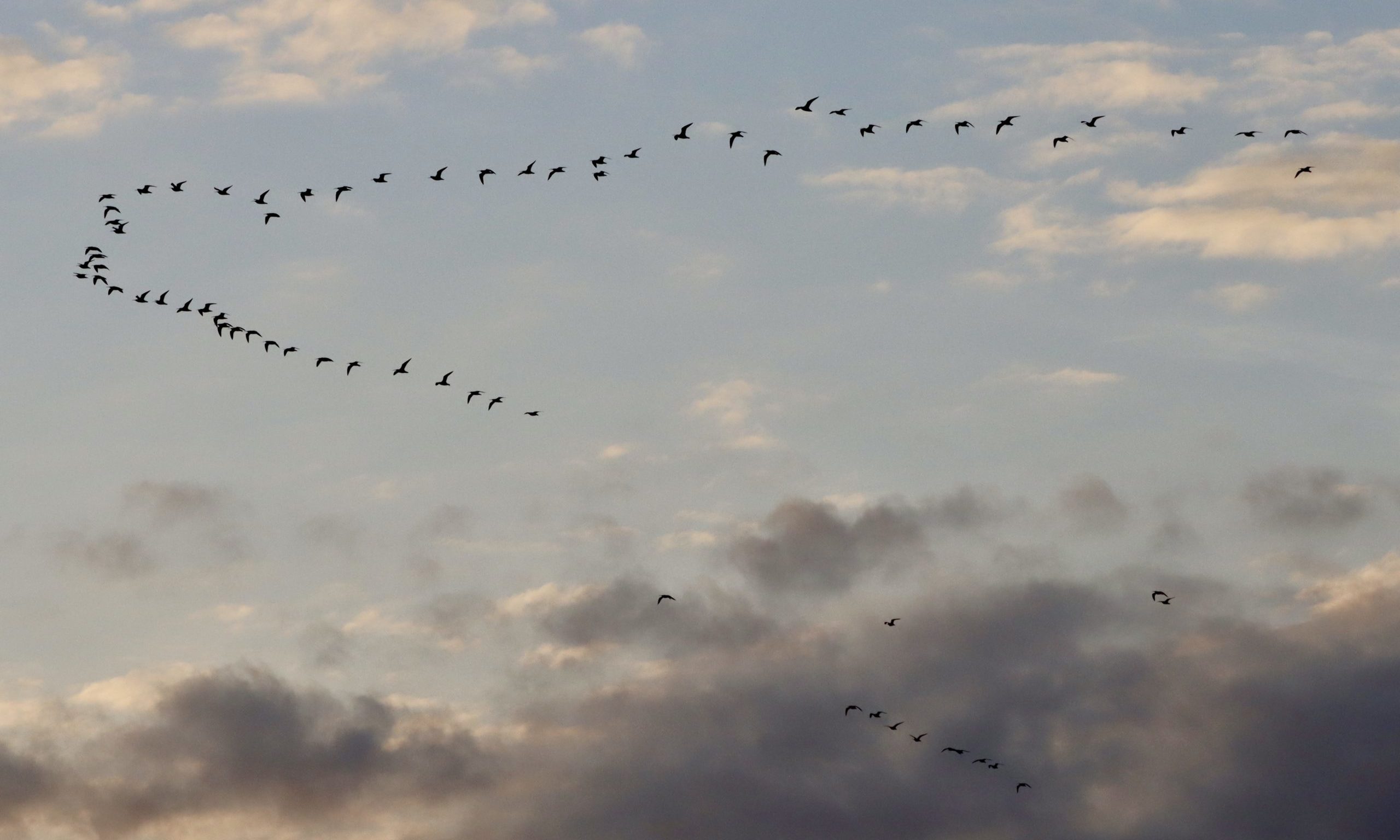


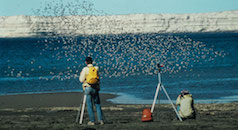
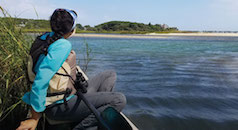
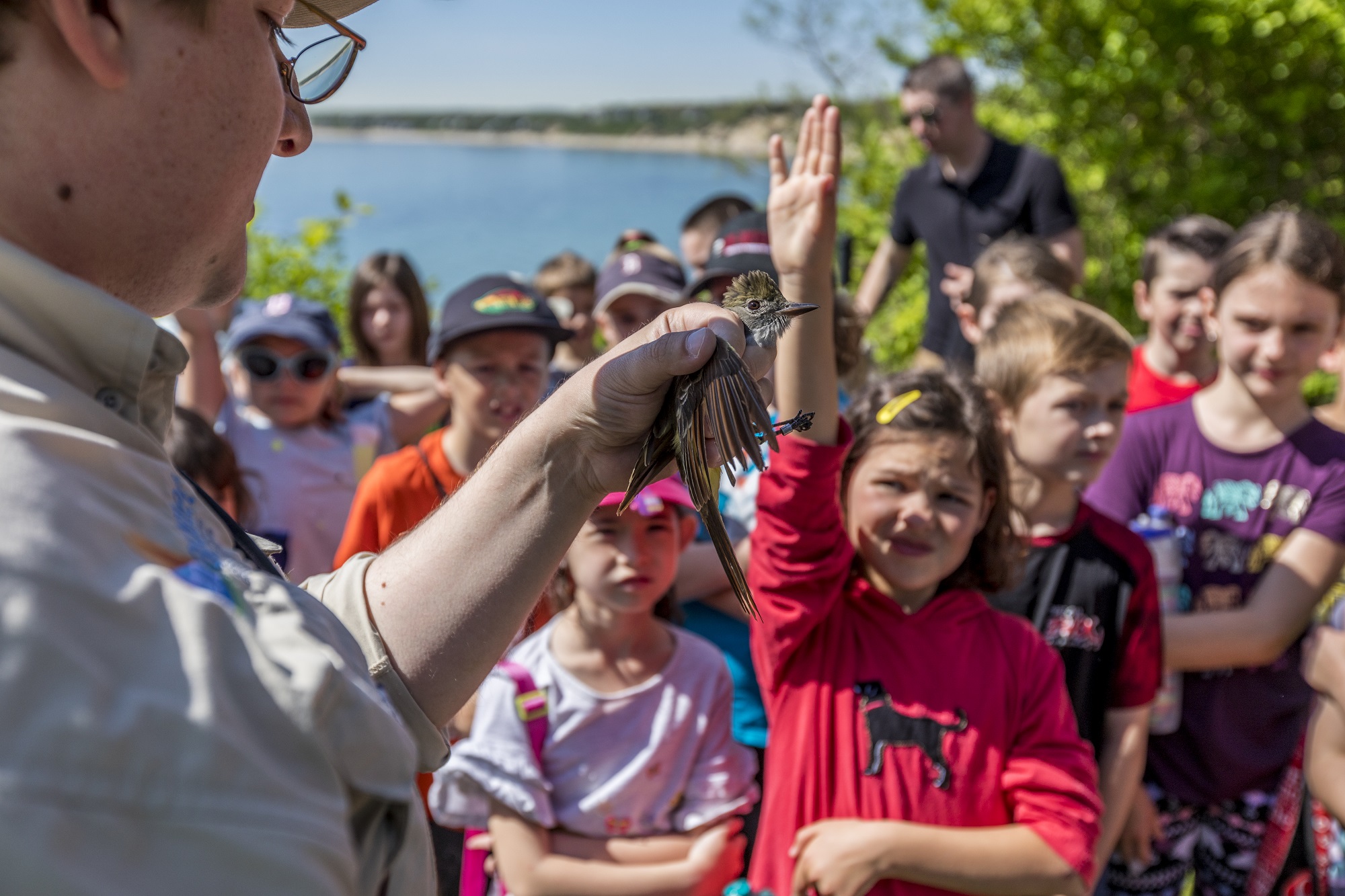
 Back to all
Back to all